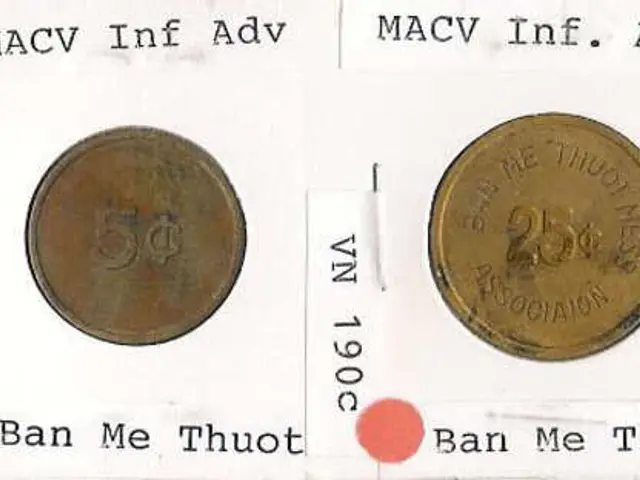Cultivating American Ginseng in Ohio: A Beginner's Guide
American Ginseng, a high-value plant native to the forests of eastern North America, including Ohio, presents an exciting opportunity for the state's woodland owners. This valuable root has been sought after for centuries, and today, it offers a potential additional income stream.
The production of American Ginseng is a long-term venture, with the plants known to live for over 80 years and the first harvest expected at about 7 to 10 years of age. Due to its high value, site security is a significant concern for growers, as the demand for this precious root is substantial.
Ginseng prefers north and east-facing sites on well-drained slopes under a forest canopy of approximately 70 to 90% shade. Soil testing is highly recommended, as ginseng does best under a relatively narrow range of soil conditions.
Harvesting wild-simulated ginseng is a time-consuming process, usually done in the fall after the plants have dropped their seed and during the legal ginseng harvest season (September 1 through December 31). Great care is taken during harvest to avoid damaging the roots, using tools like a modified short-handled mattock or a trowel.
One pound of ginseng seed currently costs $85 to $150 and is enough to plant 1,600 square feet or about 1/25 of an acre using the wild-simulated method. Wild-simulated ginseng production requires few initial inputs and offers the highest returns among the growing methods.
After harvest, ginseng roots need to be properly washed before drying, with care taken not to break the outer layer of the root. Drying roots should be placed on screens in a single layer, making sure they are not touching each other, and air circulation should be maintained using a fan. Ideal drying conditions include good air flow, consistent temperature (around 90oF), and humidity.
Roots are completely dry when they cannot be bent and break cleanly, revealing a white interior. If current market prices are down, it is usually best to delay harvest and allow the roots to grow for an extra year. Roots can also be stored for another year if prices are low during the harvest year or are expected to be higher the following year.
Ginseng can be sold to one of the 35-40 ginseng buyers in Ohio, with prices varying from $250 to $800 per lb. for dry wild or wild-simulated ginseng roots. Prices for ginseng root vary greatly by production method, with wild and wild-simulated root averaging $350 to $500/dry lb. over the past 10 years.
The focus of this fact sheet is on the wild-simulated growing method, which requires the least inputs and offers the greatest return for woodland owners. The fact sheets about American Ginseng in Ohio were issued by Ohio State University Extension.
Harvesting wild-simulated ginseng is not only a potential income source but also a way to preserve this valuable plant for future generations. With proper care and patience, American Ginseng can provide a sustainable and rewarding addition to Ohio's woodlands.
Read also:
- Peptide YY (PYY): Exploring its Role in Appetite Suppression, Intestinal Health, and Cognitive Links
- Toddler Health: Rotavirus Signs, Origins, and Potential Complications
- Digestive issues and heart discomfort: Root causes and associated health conditions
- House Infernos: Deadly Hazards Surpassing the Flames








